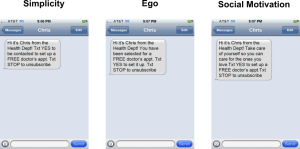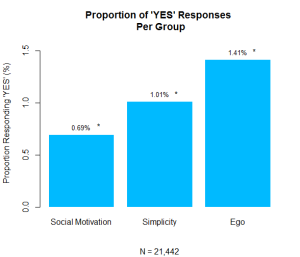If you haven’t seen a doctor in a long time, the thought of picking up the phone to schedule an appointment can be terrifying. Sometimes it’s easier to adopt an “out of sight out of mind” mentality.
However, the people who haven’t seen a doctor in years are the ones most likely to benefit from a check-up. In New Orleans, while thousands of low-income and uninsured people now have access to free check-ups through the Greater New Orleans Community Health Connection (GNOCHC), a Medicaid waiver program, only about half of covered patients had utilized the service in the past 24 months.
The City of New Orleans and 504HealthNet (a non-profit member association of New Orleans health clinics serving the poor and uninsured) set out to find out why and how take-up rates could be improved. In a project supported by Living Cities’ City Accelerator program, the City of New Orleans and 504HealthNet engaged patients through phone interviews, cohort convenings, and a day-long “design day” to understand their challenges in accessing care and to generate ideas for improving health care utilization. It became clear that take-up would improve with more direct communication regarding the free health care available in a network of clinics established after Hurricane Katrina when the iconic Charity Hospital shut its doors for good.
With this feedback in mind, the New Orleans team asked the Behavioral Insights Team (BIT) to design and conduct an experiment to test different messages that encourage recipients to schedule a free check-up. This trial was supported by Bloomberg Philanthropies’ What Works Cities initiative and is part of the City’s NOLAlytics initiative, aimed at leveraging data science to improve City services in New Orleans.
We decided to use text messages to communicate with eligible patients directly because previous research by the BIT has shown that they can be very effective at getting people to take action at a low cost. Text messages were sent to more than 21,000 low income adults (aged 19-64) in the New Orleans area. Importantly, none of the recipients had seen a primary care physician in the past two years.
Those eligible were randomly allocated into three groups, depending on the type of message they received in their texts; the “Simplicity” group, the “Ego” group, and the “Social Motivation” group. What we wanted to test was whether people would be motivated to act by receiving the information simply and clearly, or whether additional nudges would be more impactful.
Every message included three parts. First, a warm greeting followed by instructions to text “YES” to be contacted by a healthcare representative to set up a free appointment, and an option to text “STOP” to unsubscribe.
But each message differed slightly in what was emphasized.
The Simplicity group just received straightforward instructions to “Txt YES to be contacted to set up a FREE doctor’s appt.”
The messages sent to the Ego group included an additional line that said, “You have been selected for a FREE doctor’s appt.”
And in the Social Motivation group recipients received, “Take care of yourself so you can care for the ones you love.”
Five days after the messages were sent we tallied up the number of “Yes” responses. The proportion of recipients who replied “Yes” in each group are displayed in the graph below:
Many of the people we polled in advance were certain that the Social Motivation message would be most effective. This type of message matches the approach that many health departments use in their messaging. In fact, it performed significantly worse than the Simplicity text.
It turns out recipients in the Ego group were the most likely to respond “Yes”. Indeed, twice as many people responded “Yes” in the Ego group than in the Social Motivation group. This matches findings from the behavioral literature – we usually respond well to calls for action that make us feel special, even if we believe we are more motivated by service to others.
In the coming months we will follow up with the recipients to find out whether those that responded “Yes” actually showed up to their appointment. But the results are clear: simple, low cost interventions, like the use of text messages, continue to prove to be an effective method for improving the lives of underserved populations. Crucially, testing continues to matter because we can still be surprised by what does and doesn’t work.
For more information on this project, contact the BIT team who worked in NOLA: Elizabeth Linos, Alexandra de Filippo and Joseph Boskovski.


